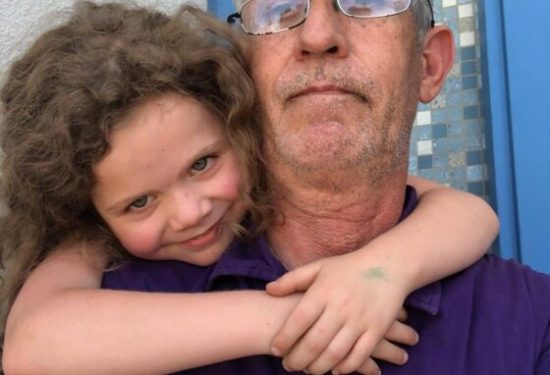Among the many challenges to improving access, funding, and quality of child care in America is the great variation across states. Each state sets its own regulations for child care, including everything from licensing requirements to subsidy rates. Nowhere is this variation more evident than with home-based child care, where even the definition of what it means to be a provider is inconsistent. Home Grown recently funded ChildTrends in partnership with Mary Beth Salomone Testa to conduct a 50 state policy scan of data related to home-based child care, illuminating these differences as well as some trends.
Key finding: wide variation across states
The policy scan reviewed data across a range of policies and the most consistent finding was the wide variation across states in policies and even terminology and naming conventions. For example:
- Naming: In different states providers may be known as family child care, child care homes, group child care, or even Type A home (Ohio).
- Group size: Each state sets its own threshold for the number of children at which providers must be licensed. In many states providers may be licensed as small or large, but the number of children served varies greatly. For example, a small family child care home in Michigan serves 1-6 children, while in Mississippi a small child care facility in the operator’s home serves 6-12 children.
- Licensure: Even the term “licensed” varies, with some states instead opting for “registered.” Other states have options for both licensed and registered with different requirements for each. Most states also recognize license-exempt or unregulated family, friend, and neighbor (FFN) providers, and FFN providers’ ability to participate in state systems varies greatly, as well.
This wide variation creates challenges for the field in communication and creating shared understanding, not to mention advocacy and cohesive policy at a national level.
Additional findings
While the most salient story emerging from the data is one of complexity and state incomparability, some additional findings emerge:
- There is no obvious causal relationship between QRIS participation and subsidy participation: States determine which providers are eligible for subsidy and whether or not providers are required to participate in their Quality Rating and Improvement System (QRIS). The opportunity to earn revenue through subsidy does not appear to be an incentive for home-based child care providers to participate in their state’s QRIS. Likewise, participation in QRIS also does not appear to incentivize or encourage serving children funded through subsidy. The average QRIS participation rate among home-based providers in states without the QRIS requirement for subsidy participation is 50.9% and that among home-based providers in states with the requirement for subsidy is less than one percentage point higher at 51.1%.
- State policy makers have the opportunity to increase the type and intensity of supports available to home-based providers via QRIS participation. Administrators can look to models in CO, IL, NM, NC, OK, OR, PA, TN and VT, as each of these states boasts a 100% QRIS participation rate for HBCC providers. The regulatory language around QRIS participation, and the incentive mechanisms and their perceived value – including QRIS-related supports, grants, and/or subsidy rate add-ons – may all play a role.
- License-exempt providers are eligible for subsidy in most states, but must meet background checks and some training requirements. License-exempt providers are eligible to receive subsidy in the majority of states. Only nine states require a license to receive subsidy (AR, DC, LA, MN, MS, NC, ND, NM, OK). Most states require unlicensed providers and members of their households to complete background checks to receive subsidy. In 35 states, unlicensed providers were required to have training in CPR or First Aid. Illinois requires unlicensed providers receiving subsidy to participate in the state’s QRIS, and other states, including California, allow unlicensed providers to participate in QRIS voluntarily.
- State administrators interested in serving more children funded through Child Care Development Fund (CCDF) through home-based child care can look to Hawaii: Eleven (11) states (AK, DC, Georgia, NC, OH, OK, TX, VT, WA, WV, and WI) have no CCDF children served in legally unregulated settings. Among the remaining 40 states, the range of CCDF children participating starts at a low of 1% (in Alaska, CO, KY, MA, MI, NJ, TN, and VA) to 72% in Hawaii. In the 11 states where the percent of CCDF children served in legally unregulated settings is 20% or higher (AL, CA, CT, HI, IL, IN, MI, MO, NV, NY, OR), only Nevada requires QRIS participation, thereby ensuring that training, technical assistance and other supports are readily available to this significant group of providers.
- Licensing for HBCC providers creates costs for states: 17 states conduct licensing inspections twice per year or more, and 5 of these require inspections three times per year or more. While the physical footprint of most HBCC sites is small, there are thousands of providers in total and in rural areas they may be spread out over hundreds of miles. Weighing considerations of child safety and the cost and efficacy of licensing inspections, states can consider how licensing visits could be minimized or streamlined through the use of video technology and other automation. California, where large family child care homes are inspected once every three years and Idaho, where group daycare facilities are inspected once every two years, may have relevant experience in this regard to share with the field.
We invite readers to review the state policy scan for more detail on state policies, including: group size limits; licensing inspection frequency; relationship between licensing status, quality rating improvement system participation and subsidy eligibility; levels of Quality Rating and Improvement System (QRIS) participation; and, percentage of children whose care is paid via CCDF served in unregulated home-based settings.




